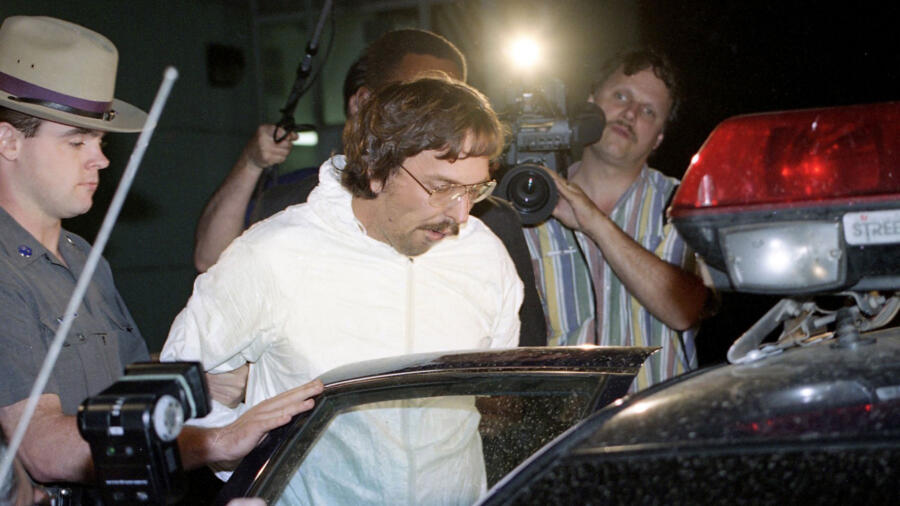Joel Rifkin wasn’t born a monster—but many wonder if his lonely, tormented childhood helped create one. Between 1989 and 1993, he murdered at least 17 women, dismembered several of them, and scattered their remains across New York and New Jersey. His brutal crimes shocked the country, but for some investigators, the warning signs had been there all along.
Was it nurture, nature, or some twisted combination of both?
Let’s uncover seven chilling clues from Joel Rifkin’s early life that suggest his descent into violence may have started long before his first murder.
He Was an Outsider from the Start
Born in 1959 and adopted as an infant, Joel Rifkin struggled to connect with others from a young age. He suffered from undiagnosed dyslexia and poor coordination—conditions that made school difficult and socializing nearly impossible.
As a result, classmates targeted him with relentless bullying. He was mocked, shoved into lockers, and publicly humiliated. The emotional wounds from these experiences never healed—and may have fueled the rage that later exploded in his crimes.
Bullying Was Constant and Cruel
Rifkin’s high school years were particularly traumatic. Hoping to make friends, he joined the track team—but teammates quickly turned against him.
In one disturbing incident, they shoved a dead chicken into his mouth. In another, they dunked his head into a toilet. These weren’t just pranks; they were acts of calculated cruelty that left lasting scars.
“He was visibly shaken when he talked about that,” recalled Robert Mladinich, a former NYPD detective who interviewed Rifkin. “That moment hurt him more than anything.”
He Longed to Belong—And Was Always Rejected
Even small slights seemed to crush Rifkin. During his senior year, he joined the yearbook staff and believed he’d finally found acceptance. But when the editors threw a celebratory party, they didn’t invite him.
For most people, a missed party would sting. For Rifkin, it confirmed his deepest fear—that he would never be part of the group. This constant rejection helped cultivate the intense feelings of worthlessness and resentment that would later define his life.
He Escaped into Violent Fantasies
Unable to cope with real-world rejection, Rifkin turned inward. He imagined himself in control—overpowering and punishing women, the group he felt had laughed at and excluded him.
These fantasies grew more violent over time. By his twenties, they had taken root so deeply that when his first victim, Heidi Balch (initially known only as “Susie”), ridiculed him, he strangled her and dismembered her body in his Long Island basement.
It was the moment fantasy became deadly reality.
He Clung to His Mother—but Failed to Thrive
Though distant from peers, Rifkin was close to his mother. They shared interests like gardening and photography. However, despite her love, she couldn’t shield him from failure.
He flunked out of college, couldn’t keep a job, and by his 30s, he was unemployed and still living at home. His father, once supportive, had died by suicide—leaving Rifkin adrift and full of unresolved grief.
The disappointment in himself, coupled with his father’s death, further eroded his fragile sense of identity.
His Arrest Was Pure Chance
On June 28, 1993, Rifkin’s secret life unraveled—not because of a major investigation, but because he was pulled over for driving without a license plate. When police chased and stopped him, they found the decomposing body of Tiffany Bresciani in the back of his truck.
Rifkin confessed to 17 murders in chilling detail. One victim, dismembered and dumped in pieces, remained unidentified for decades. In 2013, she was confirmed through DNA testing to be Heidi Balch—his first kill.
He Showed No Remorse—Only Blankness
After his arrest, Rifkin cooperated with law enforcement, but he never truly explained his motives. During a 2015 interview with former FBI profiler Mark Safarik, Rifkin gave cold, detached responses.
Safarik asked why certain women were killed and others weren’t. Rifkin admitted that some had mocked or displeased him, and those women “didn’t get to live.” He showed no emotion—only a blank stare.
“There was just no self-awareness,” Safarik said. “He couldn’t explain it. It was as if those murders just… happened.”
FAQs About Joel Rifkin’s Childhood and Crimes
Was Joel Rifkin abused by his parents?
There’s no evidence of parental abuse. In fact, his mother was supportive. However, he suffered severe bullying and emotional neglect from peers.
What triggered his first murder?
Rifkin said his first victim mocked him after sex. This, combined with years of fantasy and rage, led him to kill her.
Did Rifkin have a diagnosed mental illness?
Though he struggled with learning disabilities and likely untreated psychological issues, he was not officially diagnosed with a severe mental illness at the time of his crimes.
Why did police take so long to catch him?
He targeted marginalized victims—often sex workers—and disposed of bodies in remote places. That, paired with a lack of early evidence, allowed him to evade capture.
Where is Joel Rifkin now?
He is currently serving a life sentence at Clinton Correctional Facility in New York, with no chance of parole.
Did Rifkin ever express remorse?
No. He confessed, but showed little empathy for his victims. His responses were flat, calculated, and disturbingly emotionless.

